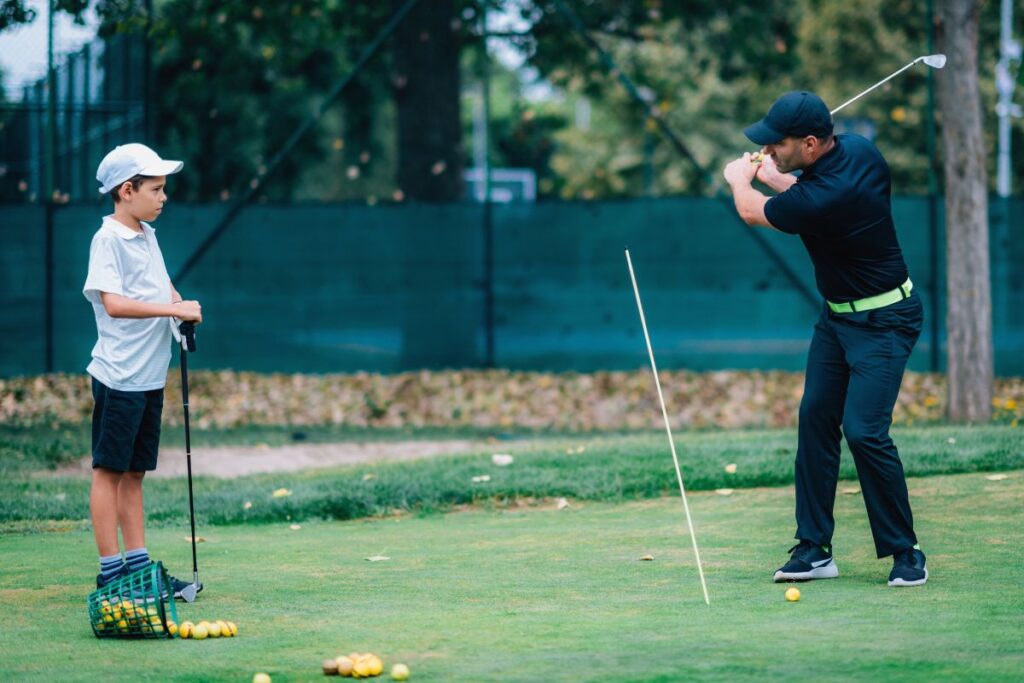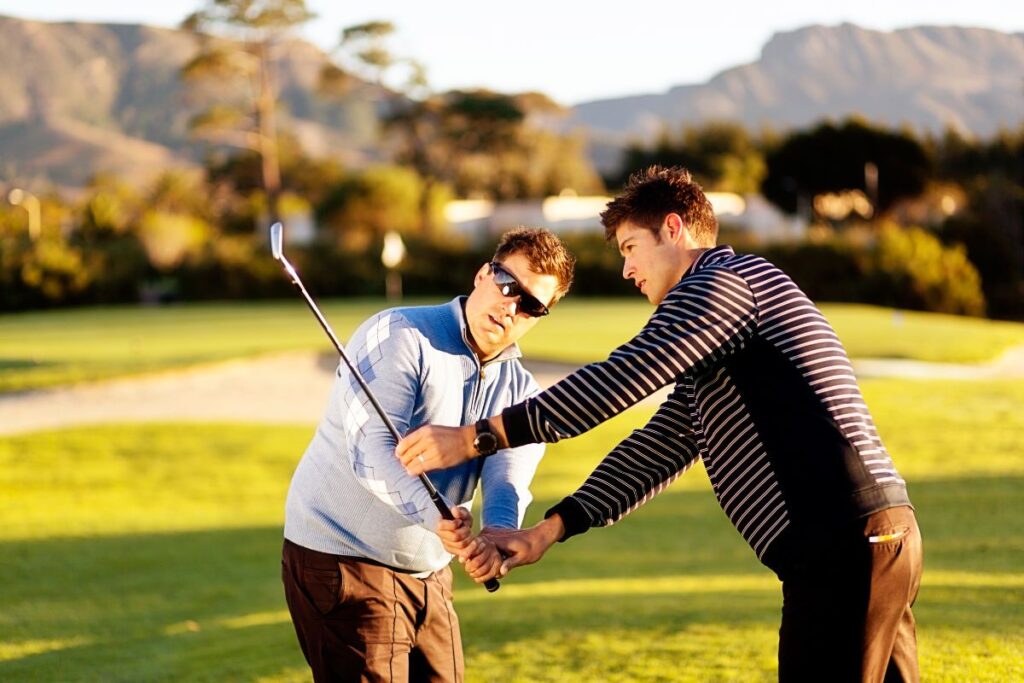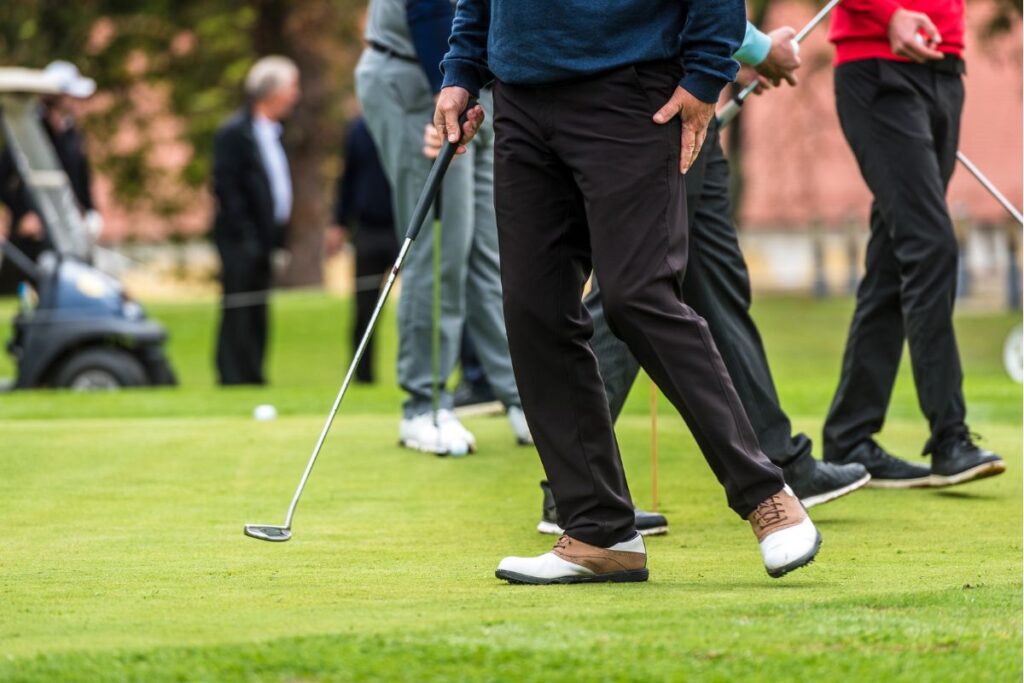Picture this: you’re on the green, ready to make that perfect swing, but the casting curse strikes. Your shot loses power, accuracy, and ends in frustration. We’re here to help you ditch the casting habit and boost your swing game. In this guide, we’ll unravel why casting happens and share simple tricks to keep your swing on track. Let’s tee off on this journey to a smoother, more controlled swing!
Table of Contents
What Is Casting
Casting isn’t just for fishing – it’s also a mistake in golf when you start swinging down too soon. This happens when you unlock your wrists right after reaching the highest point of your swing.
Instead, in a good swing, you should keep your wrists bent at the top. When you bring your hands down, try to maintain this bent position as much as you can until you hit the ball.
Issues related to club casting.
To make the ball go where you want and at the right height, you need to build up enough power before the club hits it.
There are different ways to gather this power. Most of it comes from turning your hips and shoulders, but your wrists bending also helps.
When you let your wrists unbend too early (casting) as you start swinging down, you lose that power. Instead of giving the ball a good hit, the energy gets wasted before impact. This can mess up your timing and where the ball goes.
It might even make the clubface point the wrong way at impact, sending the ball left of the target, at least at first.
How To Stop Casting
To fix the problem of casting in your swing, you need to avoid letting your wrists release too soon. There are a few ways to do this.
First, when you get to the top of your swing, think of your wrists as being stuck in place, like they’re glued or held steady as you start bringing your hands down.
Second, focus on the main goal: hitting the ball with your hands in front of the clubhead and the ball. To achieve this, you must keep your wrists bent as you swing down.
Finally, imagine that you’re hitting downward on the ball. This will also help you keep your wrists from moving too much during the downswing. By picturing the ball being squished against the ground and the clubface, you can see that your hands need to be in front of the ball when you hit it.
Drills
There are plenty of different exercises you can try to stop yourself from swinging in a way where the club goes outside-in. It’s just about figuring out which exercise works best for each person.
When you’re swinging outside-in, it often means you’re starting the downswing with your shoulders or arms. Your upper body gets ahead of your lower body and spins out.
Because of this, the club moves outside of the ideal swing path (over the top), and you end up approaching the ball from the wrong side of the target line (that’s why it’s called outside-in). If your clubface remains open, the ball might start left of the target or straight, then curve to the right (slice).
If your clubface is closed, the ball will go to the left. The position of your clubface mostly depends on how you’re holding the club and how your forearms turn through the hit.
The first thing I want you to focus on is what your lower body is doing. Make sure you begin the downswing by shifting your weight onto your front foot and allowing your hips to start opening before your upper body follows (assuming you have the flexibility for it).
The easiest and most common practice to ensure your swing goes down correctly towards the inside of the ball is to use a pole that follows your swing path.
You can use the type of pole you find at a hardware store, like those used for driveways. Just position it outside the toe of your club and align it with the same path as your club (begin with a 7 iron or smaller club).
Then, push it into the ground about a foot behind the target line. This pole serves as a helpful guide because you can see it in your peripheral vision, and you’ll naturally want to avoid hitting it on your way down.
It also helps physically – if your swing goes off and you go over the top, you’ll hit the pole and immediately realize you’ve made a mistake.
Left thumb causing casting
Many regular golfers have a hard time avoiding two common issues at impact: flipping the club or letting their left wrist bend.
What they often don’t realize, and this is something I see a lot, is that a big part of this problem comes from using their left thumb too forcefully, pushing against the club shaft to make the club release and gain speed. Unfortunately, this approach causes more trouble than it solves.
It actually makes the wrist move in the wrong direction, adding loft to the club face and resulting in a casting motion. Surprisingly, this actually slows down the club and reduces its speed. So, the attempt to create speed by applying strong pressure with the left thumb leads to an early release of the club, resulting in a flippy impact appearance.
Not only that, but it can also lead to thumb pain and strain on ligaments and tendons. If your left thumb is consistently sore, and you notice excessive wear at the top of your grip or your gloves tend to wear out beneath the thumb area, you need to pay attention.
This could not only cause long-term harm to your thumb but also negatively impact your golf swing.
A technique I often use with my students is to have them take their thumb off the shaft at the top of the swing. You can simply move it to the side.
While this might reduce a bit of control over the club, it helps you realize how much pressure you’re putting on the shaft with your thumb.
Typically, you’ll find that you’re exerting too much force. What you should really focus on is gripping the club with the last three fingers of your left hand and, as you swing back down, use these fingers to pull down on the club. This will help create a flat, stable left wrist at impact, which is what you want for a solid golf shot.
Wrapping Up
By understanding and addressing the casting issue in your golf swing, you’re poised to make significant strides in your game.
With focused practice and a commitment to maintaining proper wrist hinge, you’ll soon witness improved ball flight, enhanced accuracy, and a newfound confidence on the course.
So, bid farewell to casting woes and say hello to a more consistent and rewarding golfing experience. Remember, a little adjustment goes a long way in perfecting your swing. Get out there and enjoy the satisfying results of your efforts!



